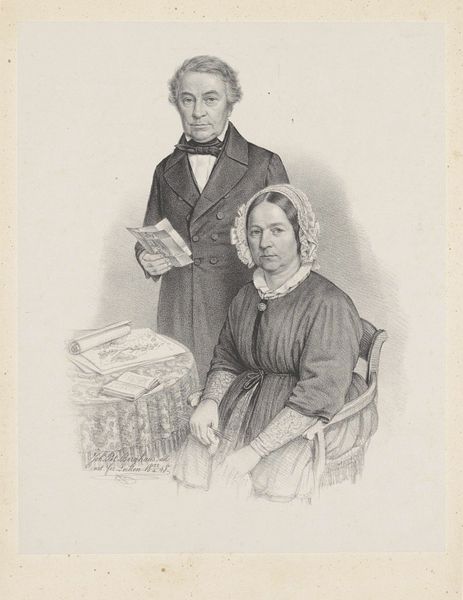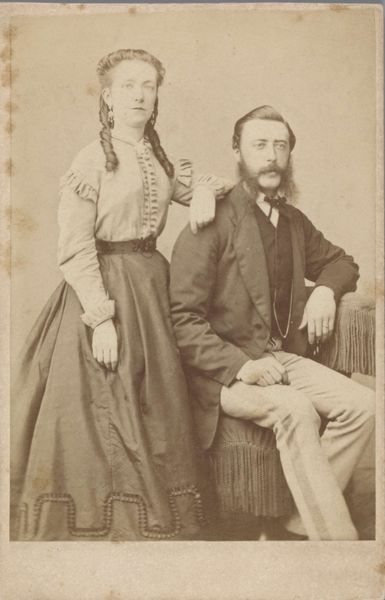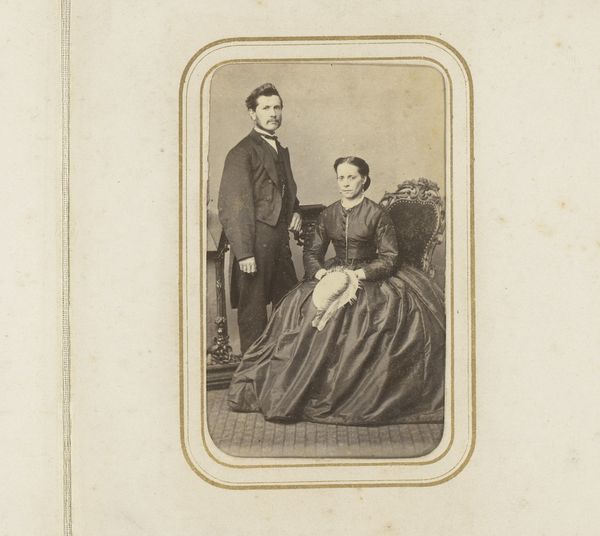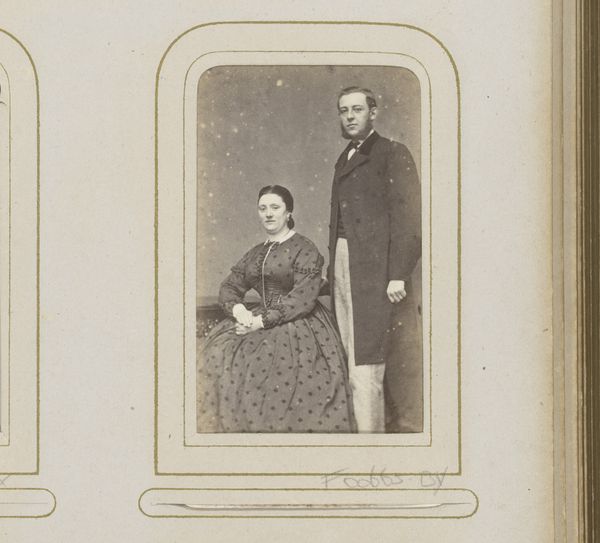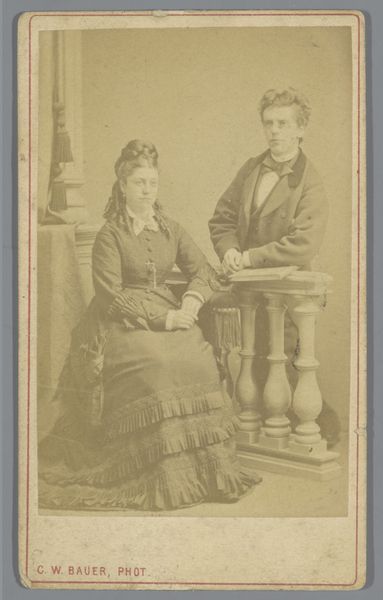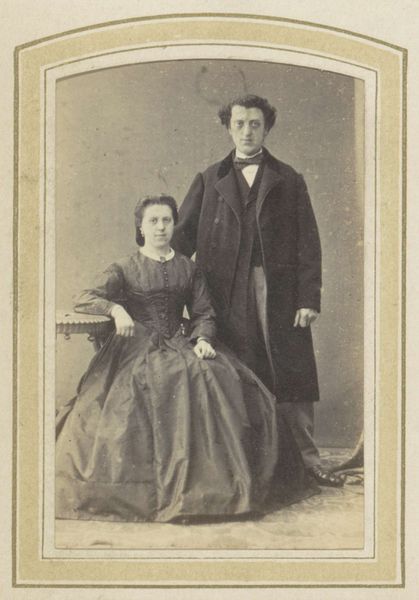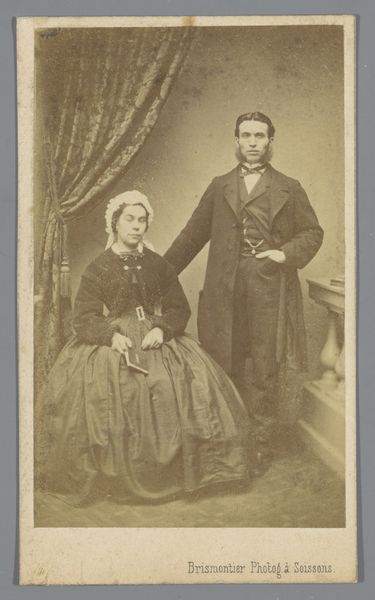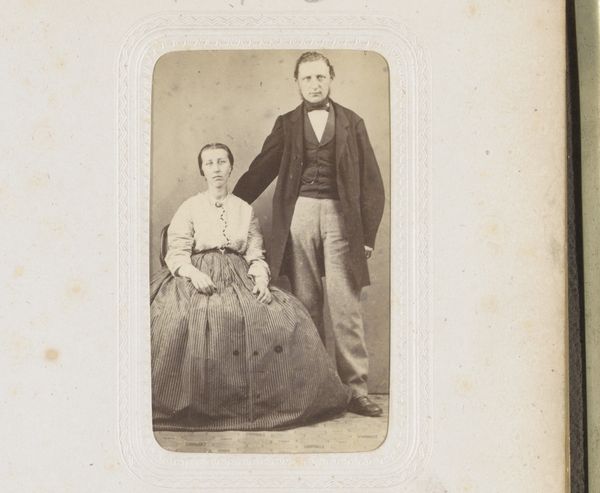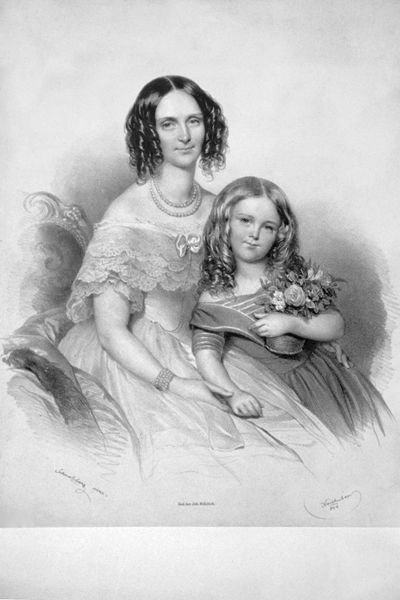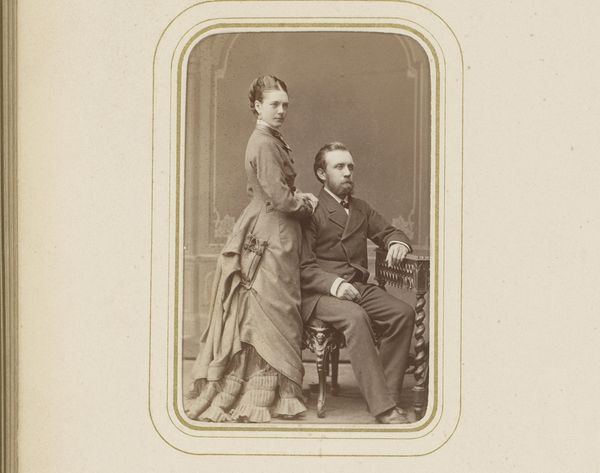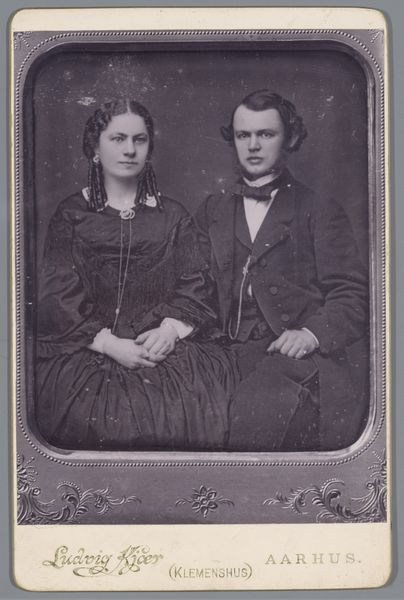
Portret van Van Heusden en zijn echtgenote Possibly 1851 - 1858
0:00
0:00
Dimensions: height 340 mm, width 252 mm
Copyright: Rijks Museum: Open Domain
Editor: Here we have Johann Peter Berghaus’s “Portrait of Van Heusden and his Wife,” likely from the 1850s. It’s a striking pencil drawing. I'm struck by the formality of the subjects and the attention to detail in their clothing. What do you notice about the portrait? Curator: What jumps out at me is how this drawing, a relatively accessible medium, participates in a larger conversation around portraiture and social status in the mid-19th century. Consider the rise of photography at this time. Did drawings like this offer an alternative, or perhaps a supplement, to photographic portraits for a specific clientele? Editor: That’s an interesting point. Maybe drawings like this were perceived as more intimate or personal than photographs? Curator: Precisely! Perhaps Berghaus was catering to a market that valued the handmade quality of the drawing as a signifier of personal connection, offering something distinct from the perceived mechanical objectivity of photography. Also, where would this drawing likely be displayed and for whom? Editor: Probably within the home, for family and close friends to view. It feels like a very private artwork in a way that public sculpture, for example, doesn’t. Curator: Exactly. And that domestic context would deeply affect its meaning and impact. These are not simply representations, but carefully constructed images designed to convey specific messages about identity and social standing within the family circle. Do you agree? Editor: Definitely. Considering its place in the home shifts how I see it entirely. I was so focused on the surface that I didn't really think about who the portrait was for, and how that affected its style and technique.
Comments
No comments
Be the first to comment and join the conversation on the ultimate creative platform.
